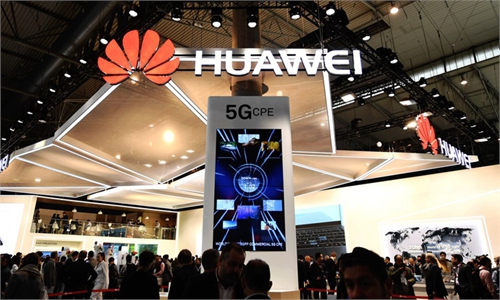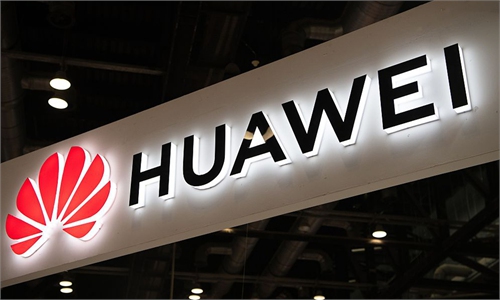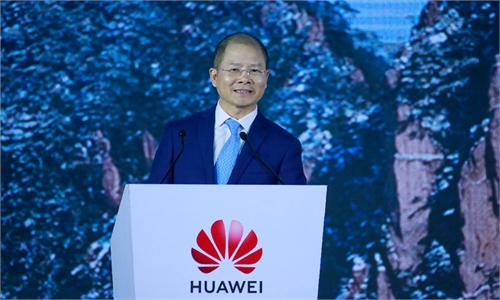Huawei's Ren pushes innovation after one-year ban as firm strives to survive, revive despite difficulties
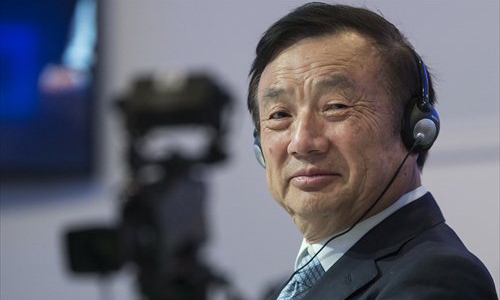
Huawei CEO Ren Zhengfei File Photo:IC
Amid the one-year ban, a talk between Ren Zhengfei, Huawei's founder and CEO, and research personnel of the firm was released on Tuesday, during which Ren stressed the company's ambition to continue feeding its HiSilicon branch, it chip unit, despite the current US crackdown, while also calling for more theoretical breakthroughs by making use of the globalization platform.
"We need more theoretical breakthroughs, especially in the fields of compound semiconductors and materials science. Japan and the US are leading the way. We must use the global platform to create our own success," Ren said.
"We allow HiSilicon to continue 'climbing the Himalaya Mountains…' This is the company's mechanism. Only with such a mechanism can we have the confidence to win," Ren said, indicating that the company will encourage the time-consuming research work.
On Monday, Huawei's HarmonyOS 2.0 reached another milestone - 100 million devices, which formerly ran Google's Android, have been updated to the in-house OS, making it the OS to reach the figure in the shortest time in the world.
The firm has also launched an intelligent coal mining system based on the HarmonyOS that's ready for commercial use in a high-profile event in Beijing on Tuesday, a step closer to make the next-generation operating system run on more than wearable devices.
Meanwhile, with its 5G capabilities, Huawei has been laying out more businesses domestically in a wider range of areas to find new income sources, including autonomous driving mining vehicles, unmanned aerial vehicle mapping of geographic information, scheduling and monitoring, and wireless data transmission.
While ambitiously pushing forward 5G commercialization, 6G is also high on Huawei's agenda despite 5G setbacks in the overseas market. Rotating chairman Xu Zhijun said that the firm is aiming to launch 6G networks in 2030, and also published a book recently detailing its 6G plans.
Huawei will define 5.5G and research 6G simultaneously in the next few years, and it is a test of the industry's imagination and creativity whether 6G can surpass 5G and 5.5G technologies, according to Xu.
The progress offers a glimpse of how the firm has rescued itself, survived and moved forward under the so-called strictest ban ever, beating off some industry calculations that it could die amid draining chip supplies.
But the progress still fell short of many expectations, indicating the impact of near-complete cutoff from semiconductors may last some more years, several industry analysts who've been closely following the firm told the Global Times on Tuesday.
"Income generated by these new businesses it's expanding may hardly compensate for the losses Huawei has suffered," Xiang Ligang, director-general of the Beijing-based Information Consumption Alliance, told the Global Times on Tuesday.
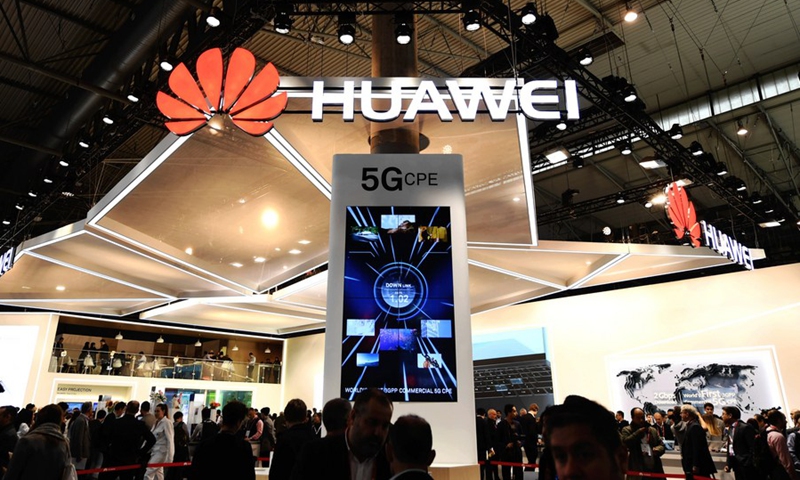
Photo taken on Feb. 26, 2018 shows a screen displaying the 5G technology at the booth of China's telecom giant Huawei during the 2018 Mobile World Congress (MWC) in Barcelona, Spain.(Photo: Xinhua)
Lethal blow
In a low-key, Chinese-language event in late July, Huawei revealed its first premium smartphones equipped with HarmonyOS, but without 5G connectivity, a major setback for the tech giant who's been leading the way in launching 5G handsets.
Data can also tell what difficulties the firm has gone through. Once the world's second-largest smartphone maker, Huawei's mobile shares have suffered greatly, falling out of the top five at home and abroad in the second quarter of the year.
The firm has also posted its third consecutive quarter decline in revenues in the second quarter - a plunge of 38 percent, according to its latest financial reports.
Xiang said its businesses may not revive earlier if it cannot replenish its chip supplies.
Industry players told the Global Times that Huawei is ramping up its own efforts to manufacture chips, and its ambition is far more than the 28-nanometer chipset as some media reported.
Huawei's self-developed chip capacity, if in full swing in the 28-nanometer process, would be enough to meet 70-80 percent of its demand at the lower-end of the chip spectrum, Han Xiaomin, general manager of Jiwei Consulting in Beijing, told the Global Times on Tuesday.
The lower-end of chips will enable it to make devices for enterprise businesses.
"Our aim is to survive, and to do so sustainably. Despite a decline in revenue from our consumer business caused by external factors, we are confident that our carrier and enterprise businesses will continue to grow steadily," Eric Xu, Huawei's Rotating Chairman, said during the release.
Industry shock
Across the country, Huawei's story was considered as an industry lesson resulting from "relying too much on US technology," and has exerted a far-reaching impact on a range of Chinese tech giants over the past two years.
Under a nationwide push to achieve self-reliance in the so-called stranglehold technological problems, they've been quietly diversifying partners or ramping up its own tech investment to reduce foreign reliance.
For instance, smartphone maker Vivo unveiled its self-designed imaging chip V1 last week, joining other leading domestic phone vendors including Xiaomi and OPPO in building in-house chips.
Small and medium-sized businesses have over the past year also upped the ante in IC manufacturing, complementing Huawei's quest for chip self-reliance, Han said, noting that such efforts will primarily meet demand for lower-end chips and prove almost futile when it comes to higher-end chipsets.
In the first half of the year, the country's IC manufacturing grew by 21.3 percent in sales revenue terms, according to data from the China Semiconductor Industry Association. This compares with a rise of 19.1 percent in IC production for the whole of 2020.
"But generally, impetus for other tech firms' self-reliance push is fading, especially as the China-US trade connection seems to be closer with tariffs still placed and so-called tech decoupling trend," a senior executive at a Shenzhen-based tech firm told the Global Times on Tuesday.
"We need to make it faster," the executive said.
In a worst-case scenario - the US expands the scope of its chip export controls to include basic components and upstream semiconductor materials - China's tech sector will inevitably feel the strain of a worsening chip shortage, according to Han.
He stressed, however, that domestic IC equipment firms have already moved to step up the localization of components and equipment for chip making, supposedly offsetting the impact to some extent on the local chip sector in case of an entire cutoff.
